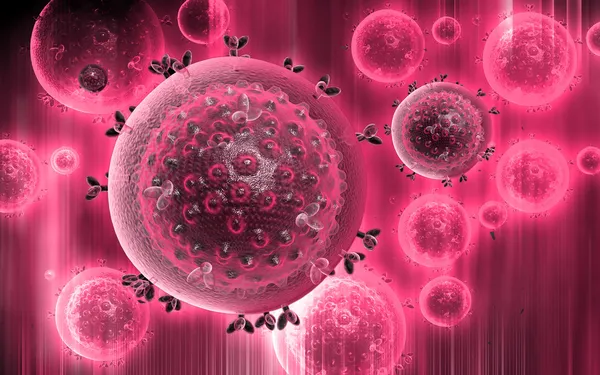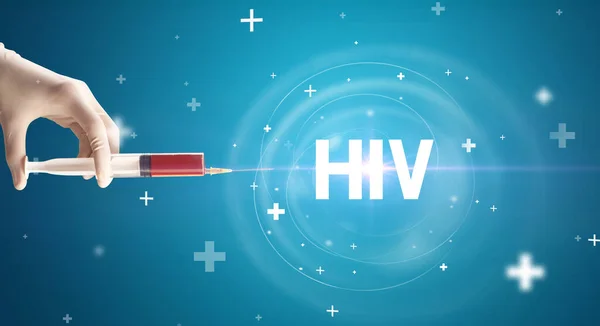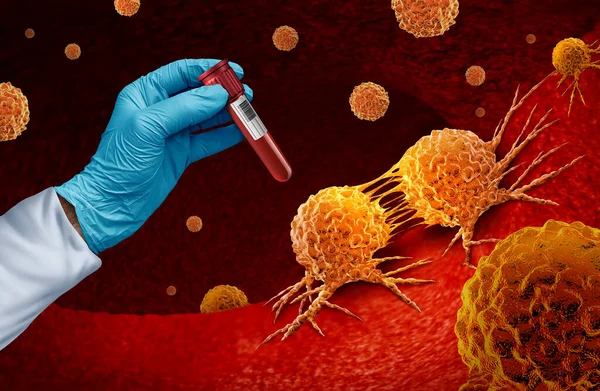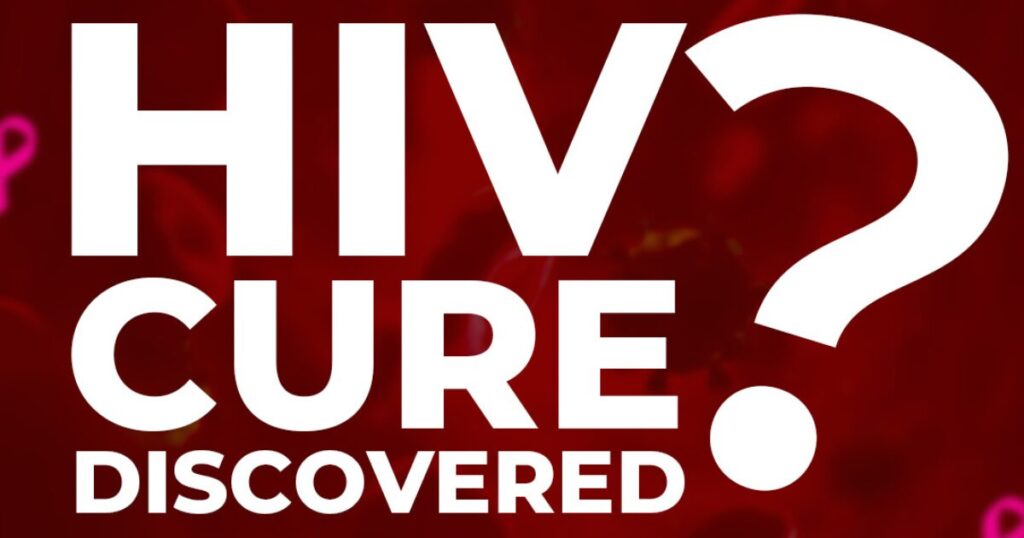HIV cure research has made considerable progress over the years. Despite the absence of a universally accessible cure, several cases have demonstrated that a cure might be possible. These instances provide hope and direction for ongoing and future research efforts.
As of now, there is no general cure for HIV that is widely available. However, there have been significant advances in the field, and some individuals have been functionally cured of HIV through experimental treatments and specific medical procedures. This article explores the current status of HIV cure research, the importance and urgency of finding a cure, and the various attempts and advancements in the field.
Table of Contents
Toggle- Importance and Urgency of Finding a Cure for HIV
- Major Developments in HIV Cure Research
- Case Studies of HIV Cure and Control
- Research and Techniques in Development
- Recent Research Highlights
- Early Treatment and Clinical Trials
- HIV Medications and Treatment
- Preventive Measures
- Challenges and Future Prospects
- Conclusion
Importance and Urgency of Finding a Cure for HIV

The search for an HIV cure is crucial for several reasons. Despite the effectiveness of HIV medications in controlling the virus, a cure would eliminate the need for lifelong treatment and the associated costs and side effects. Additionally, a cure would prevent the transmission of HIV, significantly reducing the global burden of the disease.
Reasons for Urgency:
- Quality of Life
- A cure would greatly improve the lives of people living with HIV, freeing them from daily medication and potential side effects.
- Economic Impact
- Reducing the financial burden on healthcare systems and individuals.
- Public Health
- Eradicating HIV would prevent new infections, contributing to the overall health of communities worldwide.
Impact of Current Treatments:
- Antiretroviral Therapy (ART)
- Highly effective in controlling the virus but requires lifelong adherence.
- Side Effects of HIV Medications
- Long-term use of ART can lead to various side effects, including cardiovascular issues, liver and kidney damage, and bone density loss.
These points highlight the necessity and urgency of continuing the quest for a definitive HIV cure. The advancements made so far provide a foundation for future research, bringing hope to millions of individuals affected by HIV.
Major Developments in HIV Cure Research
HIV cure research has seen remarkable advancements, although a widely accessible cure remains elusive. Below, we delve into the major developments that have marked the progress in the search for an HIV cure.
Stem Cell Transplants
Stem cell transplants have shown significant promise in curing HIV in certain cases. This approach involves replacing the patient’s immune system with that of a donor who has a natural resistance to HIV.
Key Cases:
- Berlin Patient (Timothy Ray Brown)
- First person cured of HIV through two stem cell transplants using cells from a donor with the CCR5-delta32 mutation. This mutation prevents HIV from entering immune cells.
- Despite the success, this treatment is complex, risky, and not suitable for widespread application.
- London Patient (Adam Castillejo)
- Achieved long-term remission after a similar stem cell transplant.
- Continues to live without HIV, further validating the potential of this approach.
- Düsseldorf Patient
- Another successful case of HIV remission through stem cell therapy.
- Adds to the growing evidence that stem cell transplants can potentially cure HIV.
Gene Editing
Gene editing is a cutting-edge approach that aims to modify the patient’s genetic material to resist or eliminate HIV.
Techniques:
- CRISPR/Cas9
- This technology allows for precise editing of the genome to disrupt the CCR5 gene, making cells resistant to HIV.
- Research is ongoing to ensure the safety and efficacy of this method.
- Zinc Finger Nucleases (ZFNs)
- Another gene-editing tool being investigated to alter the CCR5 receptor on immune cells.
- Early studies have shown promise, but further research is needed to refine the technique.
Kick and Kill Strategy
The kick and kill strategy involves reactivating latent HIV within the body and then eliminating it.
Process:
- Activation (Kick)
- Latent HIV is activated from its dormant state, making it visible to the immune system.
- Drugs like histone deacetylase (HDAC) inhibitors are used to achieve this.
- Elimination (Kill)
- Once activated, the HIV-infected cells are targeted and destroyed by the immune system or additional treatments.
- Immunotoxins and other therapeutic agents are employed to enhance the clearance of these cells.
Immunological Approaches
Enhancing the immune system’s ability to combat HIV is another promising area of research.
Methods:
- Therapeutic Vaccines
- Vaccines designed to boost the immune response specifically against HIV.
- Examples include the SAV001-H, a whole-killed virus vaccine showing promising results in early trials.
- Monoclonal Antibodies
- Engineered antibodies that can specifically target and neutralize HIV.
- Clinical trials are underway to evaluate their effectiveness in long-term HIV control.
Early Treatment
Starting antiretroviral therapy (ART) early in the course of infection has shown to limit the establishment of viral reservoirs and improve long-term outcomes.
Key Points:
- Mississippi Baby
- A case where early ART led to a prolonged period of HIV remission in an infant.
- Highlights the potential benefits of immediate treatment following diagnosis.
- Post-Treatment Controllers
- Individuals who start ART early and later manage to control HIV without ongoing treatment.
- Studying these cases provides insights into potential pathways for achieving a functional cure.
Future Directions
Research continues to explore and combine these approaches to develop a comprehensive cure for HIV.
Promising Areas:
- Combination Therapies
- Using multiple strategies together, such as gene editing with immunological approaches, to enhance efficacy.
- Long-Term Studies
- Ongoing clinical trials and longitudinal studies to monitor the safety and durability of these treatments.
Case Studies of HIV Cure and Control

Examining specific cases where individuals have been functionally cured or have achieved long-term control of HIV provides valuable insights into potential pathways for broader treatment strategies.
HIV Cure via Stem Cell Transplants
Stem cell transplants have led to a few high-profile cases of HIV cure, offering a glimpse into the potential for eradicating the virus.
Detailed Cases:
- Berlin Patient (Timothy Ray Brown)
- Received a stem cell transplant from a donor with the CCR5-delta32 mutation while undergoing treatment for leukemia.
- The transplant not only treated his leukemia but also eliminated HIV from his body.
- Brown tested negative for HIV until the year of his cancer-related death in 2020.
- London Patient (Adam Castillejo)
- Received Hodgkin cancer treatment akin to that described above using a CCR5-delta32 donor.
- Stopped antiretroviral therapy post-transplant and has maintained HIV remission for several years.
- Düsseldorf Patient
- Received a stem cell transplant to treat leukemia from a donor with the CCR5 mutation.
- Achieved remission and has remained free of HIV, showcasing the reproducibility of this treatment method.
Post-Treatment Controllers
Post-treatment controllers are individuals who have managed to control HIV without continuous antiretroviral therapy after an initial period of treatment.
Instances:
- French VISCONTI Cohort
- A group of individuals who started ART very early after infection and were able to control the virus without ongoing treatment.
- Represents a small but significant fraction of people who may achieve long-term remission through early intervention.
- Boston Patients
- Two individuals who did not have the CCR5 mutation after receiving bone marrow transplants.
- Initially showed no signs of HIV but eventually experienced viral rebound, highlighting the challenges in achieving a durable cure without CCR5-delta32 mutation.
HIV Control without Antiretroviral Treatment
Some individuals have naturally achieved control over HIV without the need for ART, providing clues for potential cure strategies.
Exceptional Cases:
- Elite Controllers
- A select few people whose immune systems are able to naturally regulate HIV without the need for treatment.
- Studying their immune response mechanisms can inform new therapeutic approaches.
- Buenos Aires Patient
- An individual who maintained undetectable HIV levels for over a decade without ART after stopping treatment due to side effects.
- Detailed studies revealed no replication-competent HIV DNA, suggesting a potential self-cure mechanism.
- Barcelona Woman
- Controlled HIV for more than 15 years without ART, following a clinical trial involving immune-modulating drugs.
- Her case underscores the potential for immune system-based therapies to achieve long-term viral control.
Potential Mechanisms of HIV Control
Understanding how these individuals manage to control HIV provides essential insights for developing new treatments.
Key Mechanisms:
- Immune Response
- Enhanced activity of CD8 T-cells and natural killer cells in targeting and eliminating HIV-infected cells.
- Genetic Factors
- Presence of protective HLA alleles and other genetic mutations that confer resistance to HIV infection.
- Viral Factors
- Mutations in the virus itself that render it less capable of evading the immune system.
Lessons from Case Studies
These case stories demonstrate the promise and constraints of present HIV cure research.
Key Takeaways:
- Stem Cell Transplants
- Highly effective but impractical for widespread use due to risks and the need for compatible donors.
- Post-Treatment Controllers
- Demonstrate the importance of early intervention but remain a small subset of the population.
- Elite Controllers
- Offer valuable insights into natural viral control mechanisms that could be harnessed in therapeutic interventions.
Research and Techniques in Development

The search for an HIV cure involves a multifaceted approach, combining various research techniques and strategies to eradicate or control the virus. Below are the key research methods currently under investigation.
Induce and Reduce Strategy
The Induce and Reduce strategy aims to expose hidden HIV in the body and then eliminate it.
Concept:
- Induce Phase
- Drugs are used to activate latent HIV, bringing it out of its hidden reservoirs within the body’s cells.
- Examples of Agents:
- Histone deacetylase (HDAC) inhibitors
- Protein kinase activators
- Reduce Phase
- Once activated, the immune system or additional drugs target and kill the reactivated virus.
- Examples of Agents:
- Immunotoxins
- Cytotoxic T-lymphocytes
Recent Advances:
- HDAC Inhibitors
- Drugs like vorinostat and panobinostat have shown promise in reactivating latent HIV in clinical trials.
- Protein Kinase Activators
- Agents such as bryostatin-1 are being explored for their ability to activate latent HIV and make it susceptible to the immune system.
Viral Eradication
Viral eradication involves completely eliminating HIV from the body, also known as a sterilizing cure.
Strategies:
- Gene Editing
- Removing HIV DNA from infected cells using technologies like CRISPR/Cas9.
- Examples:
- Editing the CCR5 gene to prevent HIV from entering cells.
- Immune System Enhancement
- Boosting the body’s natural ability to fight HIV.
- Examples:
- Vaccinations with therapeutic effects that elicit an immunological response against HIV.
- Monoclonal antibodies designed to neutralize the virus.
Challenges:
- Finding and Targeting Reservoirs
- HIV hides in various reservoirs within the body, such as the brain, lymph nodes, and gut.
- Effective treatments must target all these reservoirs without harming healthy cells.
- Viral Mutation
- HIV’s ability to mutate rapidly makes it difficult to target with a single approach.
- Combination therapies are being explored to overcome this challenge.
Treatment-Free Remission
Treatment-free remission, also known as a functional cure, aims to control HIV without the need for continuous antiretroviral therapy (ART).
Potential Therapies:
- Antibody Therapies
- Engineered antibodies that provide long-term suppression of HIV.
- Examples:
- Broadly neutralizing antibodies (bNAbs) that target multiple strains of HIV.
- Therapeutic Vaccines
- Vaccines designed to boost the immune system’s response to HIV.
- Examples:
- Vaccines using mRNA technology similar to COVID-19 vaccines.
Early Successes:
- French VISCONTI Cohort
- Early treatment with ART led to long-term control of HIV without ongoing medication in a small group of individuals.
- Elite Controllers
- Natural suppression of HIV without ART, providing clues for therapeutic development.
Gene Editing
Gene editing is a promising approach that involves altering the genetic material of patients to resist or eliminate HIV.
Techniques:
- CRISPR/Cas9
- Allows precise editing of the genome to disrupt HIV DNA within infected cells.
- Applications:
- Removing or deactivating the CCR5 gene to prevent HIV entry into cells.
- Zinc Finger Nucleases (ZFNs)
- Another gene-editing tool being used to modify the CCR5 receptor on immune cells.
Ongoing Research:
- Clinical Trials
- Various trials are underway to test the safety and efficacy of these gene-editing technologies in humans.
- Safety Concerns
- Ensuring that gene editing does not cause unintended consequences or off-target effects.
Immunotherapy

Immunotherapy involves boosting the body’s immune response to target and eliminate HIV-infected cells.
Methods:
- Monoclonal Antibodies
- Intended to improve the immune response by focusing on particular HIV viral components.
- Examples:
- Clinical trials are underway for VRC01, a widely neutralizing antibody.
- Immune Checkpoint Inhibitors
- Drugs that enhance the immune system’s ability to fight HIV by blocking proteins that suppress immune responses.
Potential Benefits:
- Long-Term Control
- HIV could be controlled with immunotherapy instead of requiring daily medication.
- Combination Approaches
- Combining immunotherapy with other treatments, such as ART or gene editing, to enhance overall efficacy.
Future Directions
Research continues to explore new and combined approaches to develop a comprehensive cure for HIV.
Promising Areas:
- Combination Therapies
- Combining several tactics to improve the chances of success.
- Long-Term Studies
- Ongoing clinical trials and longitudinal studies to monitor the safety and durability of these treatments.
Recent Research Highlights

Recent advancements in HIV cure research have shown significant promise. These developments span a range of innovative techniques and strategies aimed at either eradicating the virus or achieving long-term control without continuous medication.
Novel Nanomedicine Using siRNA for HIV
Researchers have developed a novel nanomedicine loaded with small interfering RNAs (siRNA) to combat HIV. This approach targets the genetic material of the virus, potentially reducing its ability to replicate and spread.
Key Points:
- Mechanism of Action
- siRNAs are designed to interfere with the virus’s RNA, preventing it from producing proteins necessary for replication.
- Benefits
- This method offers a highly targeted approach, reducing the likelihood of side effects compared to traditional ART.
PD-1-Enhanced DNA Vaccination
In an AIDS monkey model, a ground-breaking study has shown the efficacy of PD-1-enhanced DNA immunization. This vaccination strategy has shown potential in inducing sustained virus-specific CD8+ T cell immunity.
Key Findings:
- Sustained Immunity
- The six-year AIDS-free survival of the immunized monkeys suggests long-term protection.
- Mechanism
- The vaccine enhances the body’s natural immune response, specifically targeting and eliminating HIV-infected cells.
Combination of Vorinostat and Immunotherapy
A recent clinical trial suggests that a combination of the drug vorinostat and immunotherapy can coax HIV-infected cells out of latency and attack them. This combination highlights a synergistic approach to reactivating and eliminating latent HIV.
Trial Results:
- Reactivation of Latent HIV
- Vorinostat, an HDAC inhibitor, successfully reactivated latent HIV in patients.
- Immune Response
- Targeting and eliminating the HIV-infected cells that had reactivated was made easier by immunotherapy.
New Insights into T Cell Mechanisms
Scientists have uncovered important clues about how human T cells combat Mycobacterium tuberculosis, which may have implications for HIV research. Understanding these mechanisms can help in developing new strategies to boost the immune response against HIV.
Discoveries:
- T Cell Activation
- Key pathways involved in T cell activation and response to infections.
- Implications for HIV
- Potential to enhance T cell responses in HIV patients, improving their ability to control the virus.
HIV Mutation and Hiding Mechanisms
Recent studies have shed light on HIV’s rapid mutation capabilities and its ability to hide within the body. These findings are crucial for developing therapies that can target the virus more effectively.
Key Insights:
- Viral Mutation
- HIV’s high mutation rate makes it challenging to target with a single therapy.
- Latency and Reservoirs
- Understanding how HIV establishes and maintains latency is critical for developing cure strategies.
Therapeutic Vaccines
Several therapeutic vaccines are currently under development, aiming to boost the immune system’s ability to fight HIV.
Examples:
- SAV001-H Vaccine
- Uses a genetically re-engineered whole virus genome to stimulate an immune response.
- Promising outcomes in increasing the production of antibodies have been shown in early experiments.
- Kang’s Vaccine
- Similar to traditional vaccines for polio and influenza, using a killed-whole HIV-1 virus.
- Designed to enhance safety and efficacy.
Early Treatment Successes
Cases of early treatment have shown that initiating ART soon after HIV infection can significantly limit the establishment of viral reservoirs.
Notable Cases:
- Mississippi Baby
- Received ART within 30 hours of birth and showed prolonged HIV remission.
- Post-Treatment Controllers
- Individuals who started ART early and maintained control of HIV without ongoing treatment.
mRNA Technology
Building on the success of COVID-19 vaccines, researchers are exploring mRNA technology for HIV vaccines. This approach involves instructing cells to produce proteins that trigger an immune response against HIV.
Potential Advantages:
- Rapid Development
- mRNA vaccines are easily created and manufactured.
- Strong Immune Response
- Capable of inducing a robust and targeted immune response.
Early Treatment and Clinical Trials

Early treatment and ongoing clinical trials play a crucial role in understanding and developing potential cures for HIV. Initiating antiretroviral therapy (ART) soon after infection can limit the establishment of viral reservoirs and improve long-term outcomes. Here we explore the importance of early treatment, notable clinical trials, and their implications for the future of HIV cure research.
Importance of Early ART Initiation
Starting ART early in the course of HIV infection has shown significant benefits in controlling the virus and preventing the establishment of long-term reservoirs.
Benefits of Early Treatment:
- Limiting Viral Reservoirs
- Early Craftsmanship diminishes the estimate and number of idle HIV supplies in the body.
- Protecting the Immune System
- Preserves immune function by preventing extensive damage to CD4 cells.
- Reducing Transmission
- Early viral concealment decreases the chance of HIV contamination in other individuals.
Notable Cases of Early Treatment Success
Several cases have demonstrated the potential benefits of initiating ART soon after HIV infection, providing insights into how early intervention can lead to long-term control or remission.
Case Studies:
- Mississippi Baby
- A baby born to an HIV-positive mother received ART within 30 hours of birth.
- The child showed prolonged HIV remission after stopping ART, although the virus eventually rebounded.
- Post-Treatment Controllers
- Individuals who started ART early and later maintained control of HIV without continuous medication.
- Studying these cases helps researchers understand the mechanisms behind sustained viral suppression.
Key Clinical Trials
Ongoing clinical trials are essential for testing new HIV treatments and potential cures. These trials explore various strategies, including gene editing, immunotherapy, and combination therapies.
Prominent Trials:
- U.S. Clinical Trials for Twice-Yearly HIV Prevention Injections
- Evaluating the safety and efficacy of long-acting injectable ART for HIV prevention.
- PD-1-Enhanced DNA Vaccination Trials
- Assessing the ability of PD-1-enhanced DNA vaccines to induce sustained immune responses in HIV patients.
Combination Therapies
Combining different treatment approaches is a promising strategy to enhance the efficacy of HIV cure efforts. These combination therapies aim to target various aspects of the virus and its lifecycle.
Examples:
- Kick and Kill with Immunotherapy
- Combining reactivation of latent HIV with immune system boosters to eliminate the virus.
- Gene Editing with ART
- Using gene-editing technologies to create HIV-resistant cells while continuing ART to suppress the virus.
Long-Term Studies
Long-term studies are critical for understanding the durability and safety of potential HIV cures. These studies monitor patients over extended periods to assess the long-term outcomes of various treatments.
Goals:
- Assessing Durability
- Evaluating how long patients can maintain viral suppression or remission without ART.
- Monitoring Safety
- Ensuring that new treatments do not cause adverse effects over time.
Challenges in Clinical Trials
Conducting clinical trials for HIV cure research involves several challenges, including finding suitable participants, ensuring adherence to protocols, and addressing ethical considerations.
Key Challenges:
- Participant Recruitment
- Finding individuals willing to participate in experimental treatments, particularly those with potential risks.
- Adherence to Protocols
- Ensuring that participants follow treatment regimens and attend follow-up appointments.
- Ethical Considerations
- Balancing the need for research with the rights and well-being of participants.
Future Prospects
The results of ongoing clinical trials and early treatment cases provide a foundation for future research. Continued advancements in HIV cure research offer hope for developing effective and accessible treatments.
Promising Directions:
- Refining Combination Therapies
- Optimizing combinations of different treatment strategies to maximize efficacy.
- Expanding Gene Editing Techniques
- Enhancing the precision and safety of gene-editing tools like CRISPR/Cas9.
- Developing Universal Vaccines
- Creating vaccines that provide broad protection against various HIV strains.
HIV Medications and Treatment

HIV medications have significantly improved the quality of life for people living with HIV. These medications, collectively known as antiretroviral therapy (ART), help control the virus, reduce its transmission, and prevent the progression to AIDS. Below, we explore the various classes of HIV medications, guidelines for starting treatment, managing side effects, and preventive measures.
Overview of Antiretroviral Therapy (ART)
ART is the cornerstone of HIV treatment, involving a combination of medications taken daily to manage the virus.
Key Points:
- Purpose of ART
- Reduces the viral load to undetectable levels.
- Prevents HIV from damaging the immune system.
- Reduces the possibility of HIV transmission to other people.
- Effectiveness
- When taken consistently, ART can enable people with HIV to live long, healthy lives.
- Helps prevent the progression to AIDS.
Different Classes of HIV Medications
HIV medications are categorized into different classes based on their mechanisms of action. Each class targets a specific part of the HIV lifecycle.
Classes of HIV Medications:
- Nucleoside Reverse Transcriptase Inhibitors (NRTIs)
- Block an enzyme called reverse transcriptase, preventing HIV from replicating.
- Examples: Zidovudine (AZT), Lamivudine (3TC), Emtricitabine (FTC).
- Non-Nucleoside Reverse Transcriptase Inhibitors (NNRTIs)
- Bind to and alter reverse transcriptase, inhibiting its function.
- Examples: Efavirenz (EFV), Nevirapine (NVP), Etravirine (ETR).
- Protease Inhibitors (PIs)
- Block the enzyme protease, preventing HIV from maturing and becoming infectious.
- Examples: Ritonavir (RTV), Lopinavir (LPV), Atazanavir (ATV).
- Integrase Inhibitors (INSTIs)
- Stop HIV from incorporating its genetic material into the DNA of the host cell.
- Examples: Raltegravir (RAL), Dolutegravir (DTG), Bictegravir (BIC).
- Fusion Inhibitors
- Block HIV from entering CD4 cells by inhibiting the fusion process.
- Example: Enfuvirtide (T-20).
- CCR5 Antagonists
- Block the CCR5 co-receptor on CD4 cells, preventing HIV entry.
- Example: Maraviroc (MVC).
- Attachment Inhibitors
- Bind to HIV and prevent it from attaching to CD4 cells.
- Example: Fostemsavir (FTR).
- Pharmacokinetic Enhancers
- Increase the effectiveness of other HIV medications by slowing their breakdown.
- Example: Cobicistat (COBI).
Guidelines on Starting ART
Initiating ART as soon as possible after diagnosis is crucial for achieving the best outcomes. The decision on when to start ART depends on several factors.
Considerations for Starting ART:
- Timing
- ART should be started immediately upon diagnosis, regardless of CD4 count.
- Special Populations
- Pregnant women, individuals with AIDS, and those with early HIV infection should begin ART without delay.
- Personalized Treatment Plans
- Treatment plans should be tailored to individual needs, considering potential drug interactions and side effects.
Managing Treatment and Side Effects
HIV medications can cause side effects, but these are generally manageable. It is important to work closely with healthcare providers to address any issues that arise.
Common Side Effects:
- Short-Term Side Effects
- Nausea, headache, fatigue, and gastrointestinal issues.
- Long-Term Side Effects
- Cardiovascular issues, liver and kidney damage, bone density loss.
Management Strategies:
- Monitoring and Adjustment
- Regular monitoring of health and adjusting medications as needed.
- Lifestyle Modifications
- Diet, exercise, and other lifestyle changes to mitigate side effects.
- Supportive Therapies
- Additional medications or therapies to manage side effects.
Preventive Measures: PrEP and PEP
HIV medications are also used for prevention in people who are at high risk of acquiring HIV.
Pre-Exposure Prophylaxis (PrEP):
- Purpose
- Prevents HIV infection in HIV-negative individuals at high risk.
- Medication
- Truvada (tenofovir/emtricitabine) and Descovy (tenofovir alafenamide/emtricitabine).
- Efficacy
- Highly effective when taken consistently.
Post-Exposure Prophylaxis (PEP):
- Purpose
- Prevents HIV infection after potential exposure.
- Timing
- Has to be initiated 72 hours after exposure.
- Duration
- Taken daily for 28 days.
Future Directions in HIV Treatment
Research continues to explore new HIV medications and treatment strategies to improve efficacy, reduce side effects, and simplify regimens.
Promising Developments:
- Long-Acting Injectables
- Medications administered once every few months, improving adherence.
- Combination Pills
- Single pills combining multiple drugs for easier daily regimens.
- Gene Therapy
- Techniques to modify genetic material to resist or eliminate HIV.
Preventive Measures
Preventive measures are crucial in the fight against HIV, aiming to reduce the incidence of new infections and provide protection to those at high risk. Two key preventive strategies involve the use of HIV medications: Pre-Exposure Prophylaxis (PrEP) and Post-Exposure Prophylaxis (PEP).
Pre-Exposure Prophylaxis (PrEP)
PrEP is a preventive strategy for individuals who do not have HIV but are at high risk of contracting the virus. It involves taking HIV medications regularly to reduce the likelihood of infection.
Purpose of PrEP:
- Prevention
- Designed to prevent HIV infection in HIV-negative individuals.
- High-Risk Populations
- Particularly recommended for people with HIV-positive partners, those with multiple sexual partners, individuals who do not consistently use condoms, and people who inject drugs.
Medications Used for PrEP:
- Truvada (tenofovir/emtricitabine)
- One of the first approved medications for PrEP.
- Taken once daily to maintain protective drug levels in the bloodstream.
- Descovy (tenofovir alafenamide/emtricitabine)
- A newer option for PrEP, also taken once daily.
- Offers similar protection with a potentially improved side effect profile.
Efficacy and Benefits:
- High Effectiveness
- PrEP can lower the risk of HIV infection by over 90% when taken regularly.
- Accessibility
- Increasingly available through healthcare providers and public health programs.
- Minimal Side Effects
- Generally well-tolerated with few long-term side effects.
Post-Exposure Prophylaxis (PEP)
PEP is an emergency intervention for individuals who have potentially been exposed to HIV. It involves taking HIV medications for a short period to prevent the virus from establishing an infection.
Purpose of PEP:
- Emergency Use
- Used in the aftermath of a possible exposure to prevent HIV infection.
- Situations for PEP Use
- Exposure through unprotected sex, needle sharing, or occupational exposure (e.g., healthcare workers).
Timing and Duration:
- Critical Timing
- For best results, it should be initiated within 72 hours after possible exposure.
- Treatment Duration
- Taken daily for 28 days to ensure full protection.
Medications Used for PEP:
- Combination Regimens
- Typically involves a combination of three HIV medications.
- Common regimens include Truvada (tenofovir/emtricitabine) with Isentress (raltegravir) or Tivicay (dolutegravir).
Comprehensive HIV Prevention Strategies
In addition to PrEP and PEP, comprehensive HIV prevention strategies involve a combination of approaches to reduce transmission and support individuals at risk.
Key Components:
- Education and Awareness
- Advancing understanding of HIV therapy, prevention, and transmission.
- Condom Use
- Using condoms correctly and consistently to lower the risk of sexual transmission.
- Regular Testing
- Encouraging routine HIV testing to identify and treat infections early.
- Needle Exchange Programs
- Providing clean needles to people who inject drugs to reduce the risk of HIV transmission.
- Treatment as Prevention (TasP)
- Ensuring HIV-positive individuals are on effective ART to maintain an undetectable viral load and prevent transmission.
Future Directions in HIV Prevention

Research continues to explore new methods and improvements in HIV prevention to make strategies more effective and accessible.
Promising Developments:
- Long-Acting PrEP
- Investigating injectable forms of PrEP that could be administered monthly or quarterly.
- Vaccine Development
- Ongoing research into vaccines that could provide long-term protection against HIV.
- Microbicides
- Developing topical products (gels, creams) that can be applied before sexual activity to prevent HIV infection.
Challenges and Barriers
Despite advancements, several challenges and barriers remain in the widespread implementation of HIV prevention strategies.
Key Challenges:
- Access and Affordability
- Ensuring that PrEP, PEP, and other preventive measures are affordable and accessible to all who need them.
- Stigma and Discrimination
- Addressing the stigma associated with HIV that can prevent individuals from seeking preventive care.
- Adherence
- Encouraging consistent use of preventive measures, particularly PrEP, to ensure effectiveness.
Effective HIV prevention requires a multifaceted approach that includes education, access to preventive medications, regular testing, and supportive services. By combining these strategies, we can significantly reduce the incidence of HIV and move closer to the goal of an HIV-free generation.
Challenges and Future Prospects
The journey toward finding a cure for HIV is fraught with challenges, yet recent advancements provide a hopeful outlook. Understanding and addressing these challenges is crucial for the continued progress in HIV cure research and treatment development.
Challenges in HIV Cure Research
Despite significant advancements, several key challenges persist in the quest to cure HIV.
Key Challenges:
- HIV Reservoirs
- HIV can hide in latent reservoirs within the body, such as in the lymph nodes, brain, and gut.
- These reservoirs are difficult to detect and eliminate, as the virus remains dormant and invisible to the immune system and current ART.
- Viral Mutation
- HIV’s high mutation rate enables it to rapidly evolve and develop resistance to medications.
- This necessitates the continual development of new drugs and treatment strategies.
- Side Effects of Treatment
- Long-term use of ART can lead to side effects, including cardiovascular issues, liver and kidney damage, and bone density loss.
- Balancing efficacy with the management of side effects remains a significant concern.
- Accessibility and Affordability
- Ensuring that innovative treatments are accessible and affordable to all populations, especially in low-income regions, is a critical challenge.
- Stigma and Discrimination
- Social stigma and discrimination against people living with HIV can hinder access to treatment and participation in clinical trials.
Recent Advancements and Their Impact
Recent advancements in HIV cure research have shown promise in addressing some of these challenges.
Key Developments:
- Gene Editing Technologies
- Techniques like CRISPR/Cas9 offer the potential to directly modify the genetic material of HIV-infected cells, removing or disabling the virus.
- Ongoing research is focused on improving the precision and safety of these technologies.
- Stem Cell Transplants
- Successful cases like the Berlin, London, and Düsseldorf patients highlight the potential of stem cell transplants in curing HIV.
- Research is exploring ways to make this approach more accessible and less risky.
- Novel Therapeutic Approaches
- New strategies such as the kick and kill method aim to reactivate latent HIV and eliminate it with the immune system or additional therapies.
- Immunotherapy and therapeutic vaccines are being developed to boost the body’s natural defenses against HIV.
Future Prospects in HIV Cure Research
The future of HIV cure research holds promise, with several innovative approaches on the horizon.
Promising Directions:
- Combination Therapies
- Combining multiple treatment strategies, such as gene editing, immunotherapy, and ART, to enhance overall effectiveness.
- Research is focusing on finding the optimal combinations to target all aspects of HIV infection.
- Long-Acting Treatments
- Developing long-acting injectables and implants that reduce the need for daily medication, improving adherence and quality of life.
- Examples include long-acting ART and preventive treatments like long-acting PrEP.
- Functional Cures
- Aiming for functional cures where HIV is controlled without the need for continuous medication.
- This involves achieving treatment-free remission through early ART, therapeutic vaccines, or immune modulation.
- Personalized Medicine
- Tailoring treatments to individual genetic profiles and specific characteristics of their HIV infection.
- Advances in genomics and personalized medicine could lead to more effective and targeted therapies.
Collaborative Efforts and Global Initiatives
Addressing the global HIV epidemic requires collaborative efforts and comprehensive initiatives.
Key Initiatives:
- International Collaborations
- Global partnerships and collaborations between researchers, healthcare providers, and organizations to share knowledge and resources.
- Funding and Support
- Sustained funding and support for HIV cure research from governments, private sectors, and non-profit organizations.
- Community Engagement
- Involving communities in research efforts, ensuring their needs and perspectives are considered in developing and implementing treatments.
The path to an HIV cure is complex and challenging, but significant progress is being made. Continued research, innovation, and collaboration are essential to overcoming the remaining obstacles and achieving a world free of HIV. With ongoing advancements and a dedicated global effort, the prospect of curing HIV becomes increasingly attainable.
Conclusion

The quest to find a cure for HIV has made significant strides, yet much work remains. Through a combination of innovative research, new treatment strategies, and comprehensive preventive measures, the scientific community is edging closer to a potential cure. Here we summarize the key points and emphasize the importance of continued efforts in this field.
Summary of Key Points
- Current Status of HIV Cure Research
- While a widely accessible cure for HIV is not yet available, significant advances have been made.
- Cases of functional cures, such as those involving stem cell transplants, provide hope and direction for ongoing research.
- Importance of Finding a Cure
- A cure would eliminate the need for lifelong antiretroviral therapy (ART), improve quality of life, reduce healthcare costs, and prevent HIV transmission.
- The urgency of finding a cure is underscored by the social, economic, and public health benefits it would bring.
- Major Developments in Research
- Key approaches include stem cell transplants, gene editing, the kick and kill strategy, and immunological approaches.
- Early treatment and combination therapies are also showing promise in controlling and potentially curing HIV.
- Preventive Measures
- Pre-Exposure Prophylaxis (PrEP) and Post-Exposure Prophylaxis (PEP) are effective strategies to prevent HIV infection.
- Comprehensive prevention strategies, including education, regular testing, and needle exchange programs, are crucial in reducing HIV incidence.
- Challenges and Future Prospects
- Challenges such as HIV reservoirs, viral mutation, treatment side effects, and accessibility must be addressed.
- Promising future directions include long-acting treatments, functional cures, personalized medicine, and international collaborations.
Importance of Continued Research and Support
Continued research and sustained support are vital to overcoming the remaining challenges in HIV cure research. The scientific community, healthcare providers, governments, and organizations must work together to:
- Advance Research
- Support innovative research and clinical trials to explore new treatment strategies and refine existing ones.
- Enhance Accessibility
- Ensure that new treatments and preventive measures are accessible and affordable to all populations, especially in low-income regions.
- Address Stigma
- Combat stigma and discrimination associated with HIV to encourage more individuals to seek testing and treatment.
- Foster Collaboration
- Promote international collaboration to share knowledge, resources, and best practices in HIV research and treatment.
Hope for Future Breakthroughs
The advancements made so far provide a solid foundation for future research. With ongoing efforts, the scientific community remains hopeful that a widely accessible and effective cure for HIV will be achieved. Each step forward brings us closer to a world where HIV is no longer a global health threat.
Read Also:
